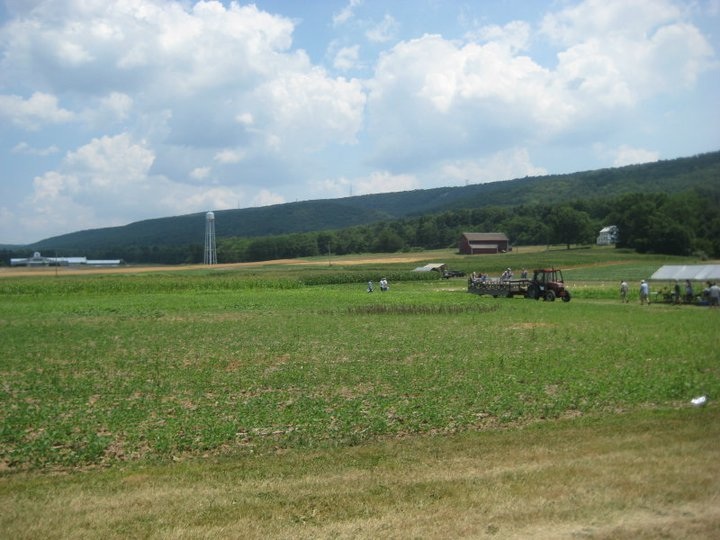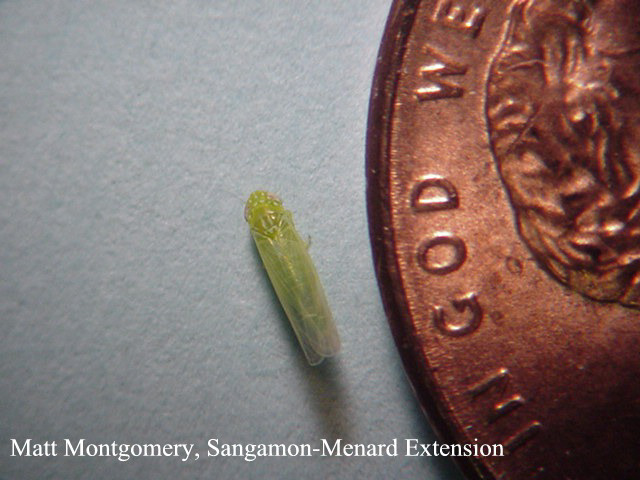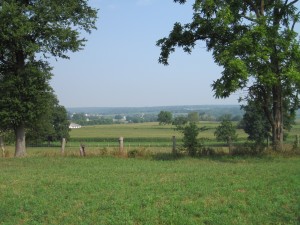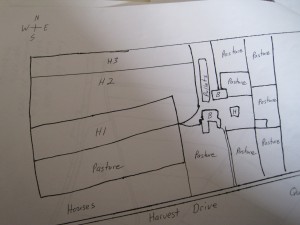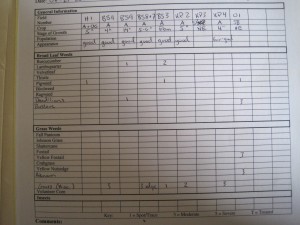My last week of work gave me the chance to learn one last crop consulting skill–estimating corn yields. This information can be very important for farmers, especially for those growing corn for grain. For some farmers, if yields are low enough they may decide to use the corn for silage instead of grain or they may take out crop insurance. This year in particular brought with it some extra challenges. Lancaster had a very wet spring and a dry summer. All the moisture in the spring made it difficult for some corn to become established and the lack of moisture in the summer caused the corn a great deal of stress which in turn caused many ears to abort kernels.
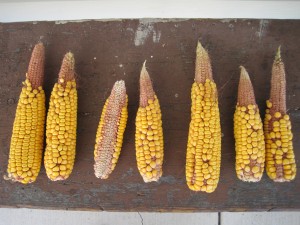
This is a set of ears I pulled. This is a fairly good representation of what a lot of them looked like this year.
I enjoyed learning how to take yields. It’s a fairly simple process. You measure 17’5” along a row of corn and then pull every fifth ear. You then husk the ears and estimate the number of kernels per ear. This information is then plugged into an equation that determines bushels per acre. This process is repeated 3-5 times throughout the field depending on the size of the field. Ideally, more reps would be taken but time-wise that wouldn’t be very practical (it took me about 15 minutes per rep). My boss told me that our estimates may not be extremely accurate but they usually are enough to pick out fields with unusually low yields. I realized how accurate this was when I got a yield of 144 bu/acre in one field and a yield of 96 bu/acre in a field directly across the lane.
On the last day of my internship my boss and I sat down and discussed how the summer went. He asked me what I had enjoyed and what I hadn’t. The first month or so of the job was a bit tough. The days were really long with a 12 hour day being the norm. That said, it was a fun challenge. There were a lot of weeds to memorize and it was definitely rewarding once I got them all down. One of the hardest parts of the job, in my opinion, was determining weed severity, especially when a field appeared to be borderline between needing treatment and not needing treatment. I tended to be a little overly cautious, rating weed pressure a little on the high side.
This experience as a whole gave me a new appreciation for crop consultants and the work they do. Just the sheer amount of information they are responsible for impressed me. Their job demands that they understand farming methods, keep track of fields’ weed histories and stay up to date on all the latest pesticides and application rates. Now that agriculture is becoming bigger and more intensified it is becoming more and more necessary for farmers to hire a crop consultant. There wouldn’t be enough hours in a day for a farmer to do his work and the work now being taken over by crop consultants. Overall, this summer was a great experience for me. I don’t think I’ve found a future job in crop consulting but I am definitely grateful to have been exposed to such a fantastic learning opportunity.

